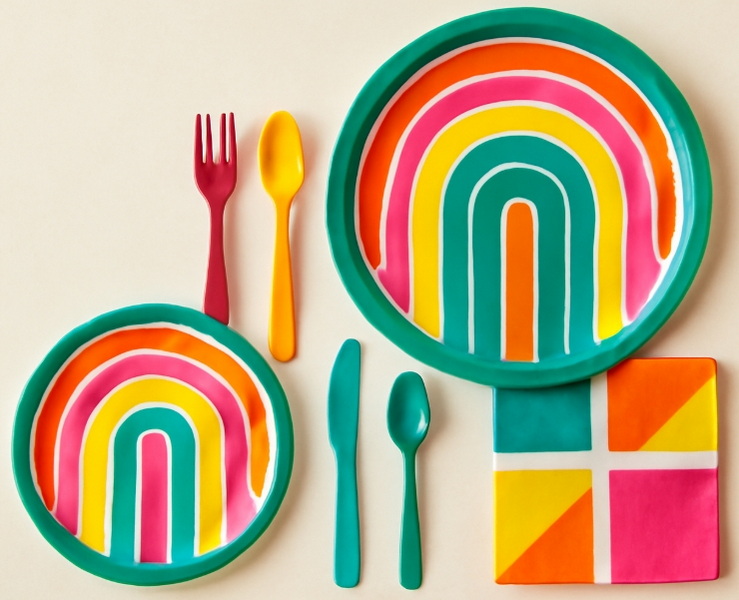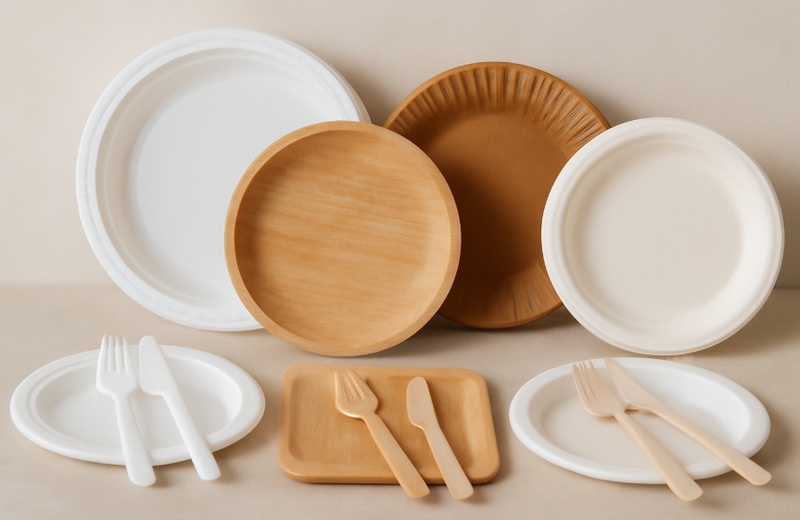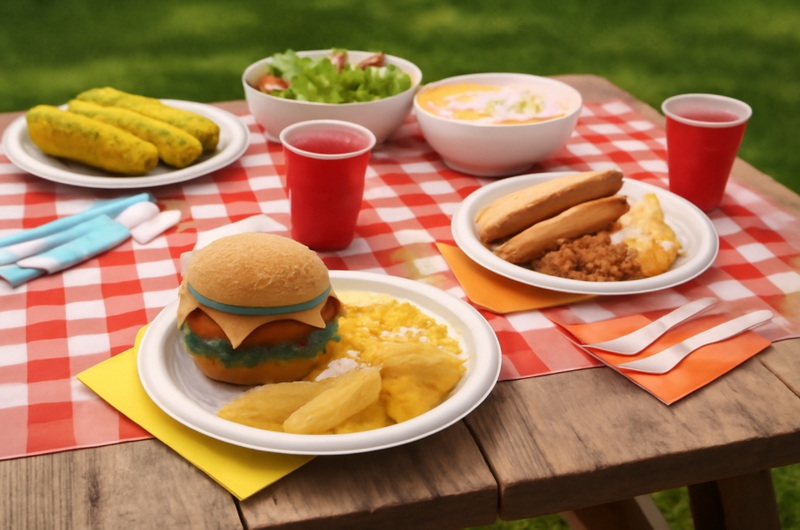
Content Menu
● Overview of the Australian Disposable Plate Market
>> Market Size and Growth
>> Key Drivers
● Key Trends: Sustainability and Innovation
>> Shift Towards Eco-Friendly Materials
>> Regulatory Environment
>> Innovation in Design and Functionality
● Top Disposable Plate Manufacturers And Suppliers in Australia
>> 1. BioPak
>> 2. Ecodyne Tableware
>> 3. Chanrol
>> 4. Partyware
>> 5. Food Packaging Online
>> 6. Vivo Packaging Australia
>> 7. Romax
>> 8. Abcoe
>> 9. Bulk Buys
>> 10. Natural Panaa
>> Table: Comparison of Top Disposable Plate Manufacturers And Suppliers
● The Manufacturing Process: From Raw Material to Finished Plate
>> 1. Raw Material Selection
>> 2. Plate Forming
>> 3. Quality Control
>> 4. Packaging and Distribution
>> 5. Environmental Considerations
● Choosing the Right OEM Partner
>> 1. Product Range and Customization
>> 2. Certifications and Compliance
>> 3. Production Capacity and Lead Time
>> 4. Sustainability Initiatives
>> 5. After-Sales Support
● Conclusion
● Frequently Asked Questions
>> 1. What are the most popular materials used by disposable plate manufacturers and suppliers in Australia?
>> 2. How do I choose between different disposable plate suppliers?
>> 3. Are there OEM disposable plate manufacturers in Australia that can produce custom-branded plates?
>> 4. What is the minimum order quantity for OEM disposable plates?
>> 5. How are disposable plates contributing to sustainability in Australia?
Disposable plates have become an indispensable part of modern dining, catering, and event management. As the demand for convenience, hygiene, and sustainability continues to rise, the market for disposable tableware—especially plates—has expanded rapidly in Australia. This article provides a comprehensive overview of the top disposable plate manufacturers and suppliers in Australia, explores the latest trends in eco-friendly materials, and offers insights into the manufacturing process. Whether you are a brand owner, wholesaler, or producer seeking OEM services, this guide will help you navigate the dynamic landscape of disposable plate suppliers in Australia.

Overview of the Australian Disposable Plate Market
Australia's disposable plate market is driven by the foodservice industry, including restaurants, cafes, catering services, and the growing trend of takeout and food delivery. The market is highly competitive, with both domestic and international players offering a wide range of products, from traditional plastic and paper plates to innovative biodegradable and compostable options.
Market Size and Growth
- The Australian paper cups and paper plates market reached USD 1.10 million in 2024 and is projected to grow at a CAGR of 4.10% to reach USD 1.59 million by 2033.
- The rise of online food delivery platforms and the recovery of the hospitality sector post-pandemic have fueled demand for disposable tableware.
Key Drivers
- Convenience: Disposable plates offer quick cleanup and are ideal for events, parties, and outdoor activities.
- Hygiene: Single-use plates reduce the risk of cross-contamination.
- Sustainability: Increasing consumer and regulatory focus on eco-friendly products is shaping the market.
Key Trends: Sustainability and Innovation
Shift Towards Eco-Friendly Materials
Australian consumers and businesses are increasingly seeking sustainable alternatives to traditional plastic plates. Manufacturers are responding by developing products made from:
- Bagasse (Sugarcane Pulp): Compostable and biodegradable, bagasse plates are sturdy and suitable for hot and cold foods.
- Palm Leaf: Naturally biodegradable, palm leaf plates are made from fallen leaves and require minimal processing.
- Paper: Often coated with plant-based materials for leak resistance, paper plates are lightweight and recyclable.
- Biodegradable Plastics: Some manufacturers offer plates made from bioplastics derived from renewable resources, which break down more easily than conventional plastics.
Regulatory Environment
- Government restrictions on single-use plastics have accelerated the adoption of paper-based and compostable tableware.
- Western Australia's proactive stance on plastic bans is driving innovation in sustainable packaging.
- National and state-level policies are encouraging businesses to transition to environmentally friendly alternatives, further boosting demand for sustainable disposable plates.
Innovation in Design and Functionality
- Manufacturers are introducing plates with improved strength, leak resistance, and heat tolerance.
- Compartment plates and custom shapes are becoming popular for catering and food delivery.
- Custom printing and branding options are increasingly available, allowing businesses to enhance their brand visibility.
Top Disposable Plate Manufacturers And Suppliers in Australia
Below is a curated list of leading disposable plate manufacturers and suppliers in Australia, each offering unique strengths in product range, sustainability, and OEM capabilities.
1. BioPak
- Specialty: Compostable plates made from bagasse and other plant-based materials.
- Strengths: Wide range of eco-friendly products, strong focus on sustainability, and partnerships with foodservice providers.
2. Ecodyne Tableware
- Specialty: Palm leaf plates and artisanal eco-friendly tableware.
- Strengths: Largest palm leaf plate supplier in Australia, strong commitment to environmental protection, and bulk order capabilities.
3. Chanrol
- Specialty: Plastic and biodegradable plates, custom moulding for large runs.
- Strengths: Over 30 years of experience, HACCP certified, and a pioneer in thin wall injection moulded containers.
4. Partyware
- Specialty: Wide range of disposable products for retail and hospitality.
- Strengths: Market leader in manufacturing and distribution, extensive product portfolio.
5. Food Packaging Online
- Specialty: Disposable plates, cutlery, and packaging solutions.
- Strengths: Easy online ordering, variety of materials including compostable options.
6. Vivo Packaging Australia
- Specialty: Sugarcane and plastic disposable plates.
- Strengths: Australian-owned, offers both standard and compartment plates, bulk supply for events and catering.
7. Romax
- Specialty: Australian-made, environmentally friendly disposable plates.
- Strengths: Fast dispatch, strong focus on sustainability, and competitive pricing.
8. Abcoe
- Specialty: Paper and natural fibre plates.
- Strengths: Offers both retail packs and bulk cartons, competitive pricing for large orders.
9. Bulk Buys
- Specialty: Disposable plates and bowls for dining solutions.
- Strengths: Bulk purchasing options, wide selection for different needs.
10. Natural Panaa
- Specialty: Eco-friendly paper and palm leaf plates.
- Strengths: Biodegradable, compostable, robust, and chemical-free products.

Table: Comparison of Top Disposable Plate Manufacturers And Suppliers
| Company | Main Products | Eco-Friendly Options | OEM/Custom Service | Notable Strengths |
| BioPak | Bagasse plates, trays | Yes | Yes | Sustainability, partnerships |
| Ecodyne Tableware | Palm leaf plates | Yes | Yes | Largest palm leaf supplier |
| Chanrol | Plastic, biodegradable | Yes | Yes | 30+ years, HACCP certified |
| Partyware | Full disposable range | Yes | Yes | Market leader, wide portfolio |
| Food Packaging Online | Plates, cutlery, packaging | Yes | Yes | Online ordering, variety |
| Vivo Packaging | Sugarcane, plastic plates | Yes | Yes | Bulk supply, compartment plates |
| Romax | Paper, eco plates | Yes | Yes | Fast dispatch, local production |
| Abcoe | Paper, fibre plates | Yes | Yes | Bulk pricing, variety |
| Bulk Buys | Plates, bowls | Yes | Yes | Bulk options, selection |
| Natural Panaa | Palm leaf, paper plates | Yes | Yes | Biodegradable, robust |
The Manufacturing Process: From Raw Material to Finished Plate
Understanding how disposable plates are made can help buyers choose the right supplier and product for their needs. Below are the main steps in the manufacturing process.
1. Raw Material Selection
- Paper Plates: Made from food-grade paper, often with a plant-based or PE coating for leak resistance.
- Bagasse Plates: Produced from sugarcane pulp, a byproduct of sugar manufacturing.
- Palm Leaf Plates: Crafted from naturally fallen palm leaves, cleaned and heat-pressed into shape.
- Biodegradable Plastics: Derived from renewable resources such as cornstarch or PLA (polylactic acid).
2. Plate Forming
- Automatic Machines: Sheets of raw material are cut and pressed into plate shapes using heated dies.
- Customization: Different dies allow for various sizes and compartment designs, catering to diverse customer needs.
3. Quality Control
- Plates are checked for strength, leak resistance, and uniformity.
- Biodegradable and compostable plates undergo additional testing for environmental compliance and food safety.
4. Packaging and Distribution
- Plates are stacked, wrapped, and packed for bulk or retail distribution.
- OEM suppliers can customize packaging with client branding, including logos, colors, and product information.
5. Environmental Considerations
- Manufacturers are increasingly adopting energy-efficient production methods and minimizing waste.
- Many companies are investing in closed-loop recycling systems and using renewable energy sources to power their facilities.
Choosing the Right OEM Partner
For overseas brand owners, wholesalers, and producers, selecting the right OEM disposable plate manufacturer is crucial. Here are key factors to consider:
1. Product Range and Customization
- Ensure the supplier offers a variety of materials (paper, bagasse, palm leaf, plastic) and plate designs.
- Look for custom printing and packaging options to enhance your brand.
2. Certifications and Compliance
- Check for food safety certifications (HACCP, FDA, ISO) and compliance with local regulations.
- Eco-friendly certifications (compostable, biodegradable) are increasingly important for market acceptance.
3. Production Capacity and Lead Time
- Assess the manufacturer's ability to handle large orders and meet delivery deadlines.
- Inquire about minimum order quantities and flexibility for scaling production as your business grows.
4. Sustainability Initiatives
- Partner with suppliers committed to reducing environmental impact through sustainable sourcing and production.
- Evaluate the company's use of renewable materials, waste management practices, and carbon footprint reduction efforts.
5. After-Sales Support
- Reliable customer service and post-sale support are essential for long-term partnerships.
- Choose suppliers who offer technical assistance, product training, and responsive communication.
Conclusion
The Australian disposable plate market is evolving rapidly, driven by consumer demand for convenience, hygiene, and sustainability. Leading manufacturers and suppliers are responding with innovative products made from renewable materials, advanced manufacturing processes, and a strong commitment to environmental responsibility. Whether you are a brand owner, wholesaler, or producer seeking OEM services, understanding the market landscape and choosing the right partner is essential for success. By prioritizing quality, sustainability, and customization, businesses can meet the needs of modern consumers while contributing to a greener future.

Frequently Asked Questions
1. What are the most popular materials used by disposable plate manufacturers and suppliers in Australia?
The most popular materials include paper, bagasse (sugarcane pulp), palm leaf, and biodegradable plastics. Each material offers unique benefits in terms of sustainability, strength, and cost.
2. How do I choose between different disposable plate suppliers?
Consider factors such as product range, eco-friendly certifications, customization options, production capacity, and after-sales support. Request samples to assess quality before placing bulk orders.
3. Are there OEM disposable plate manufacturers in Australia that can produce custom-branded plates?
Yes, many leading suppliers such as BioPak, Chanrol, and Ecodyne Tableware offer OEM and custom branding services for bulk orders.
4. What is the minimum order quantity for OEM disposable plates?
Minimum order quantities vary by supplier and product type. Some manufacturers accommodate small trial orders, while others require larger commitments for custom production.
5. How are disposable plates contributing to sustainability in Australia?
Manufacturers are increasingly using renewable materials, such as bagasse and palm leaf, and adopting compostable and biodegradable technologies. This shift helps reduce landfill waste and supports Australia's move toward a circular economy.

















